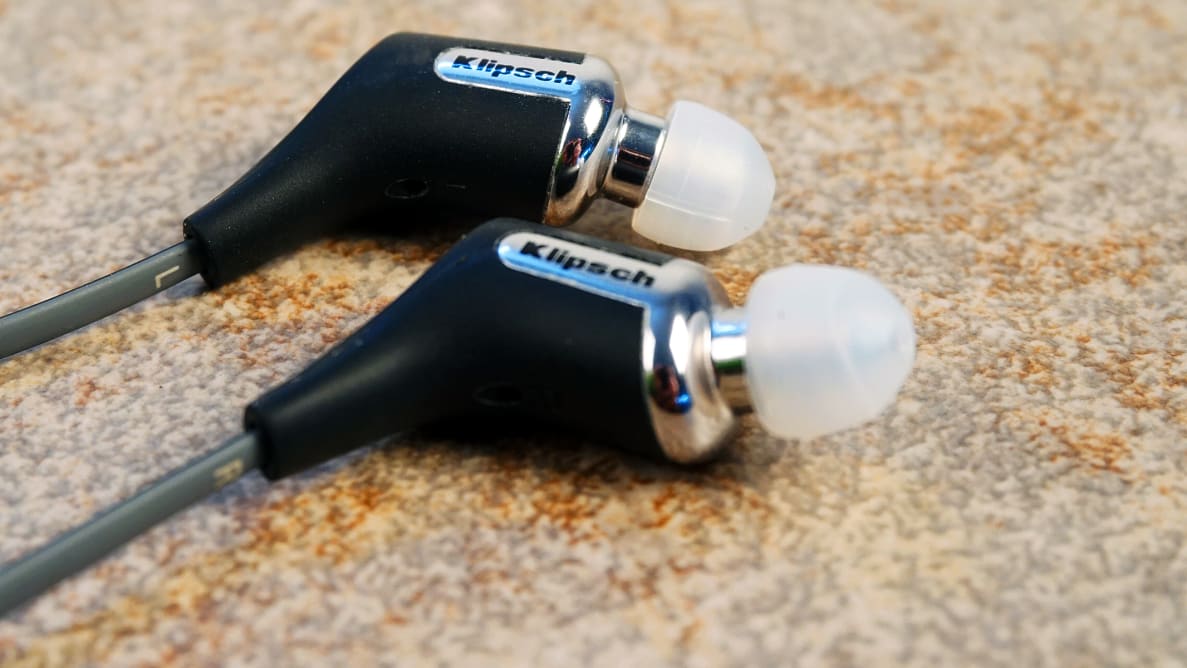These aren't the most exciting headphones in terms of design (though Klipsch does make some fashionably tiny buds, if that's your thing). Practical listeners won't care about the looks once they're listening, however—the R6i in-ears sound great. Testing revealed a rich, consumer-friendly sound; perceptibly distortion-free playback; and great isolation, so you can tune out the world if need be.
While we highly recommend the Reference R6i in-ears as a solid all-around buy, there are other great options in this price range if you have slightly more specific needs. For example, if you're looking for workout buds specifically, check out the JBL Synchros Reflect. And if flashy and fashionable is more your cup of tea, check out the Beats Heartbeats.
Design & Features
Sturdy and simple without extraneous ornamentation.
The Reference R6i in-ears definitely err on the side of simple. These Klipsch 'buds are available in a black or white color scheme, but the materials, design, and features are identical between the two: A flat, tangle-resistant Y-cable with reinforced jack/neck splits gives way to two lightweight-but-sturdy ear buds; the neck split is adjustable, and like the rest of the cable, is duly reinforced. The ear buds themselves are made of firm black (or white) plastic and emblazoned on each side with silver highlights that bear Klipsch's insignia. It's not the most standout design on the market, but it's minimal and straightforward in all the right ways.
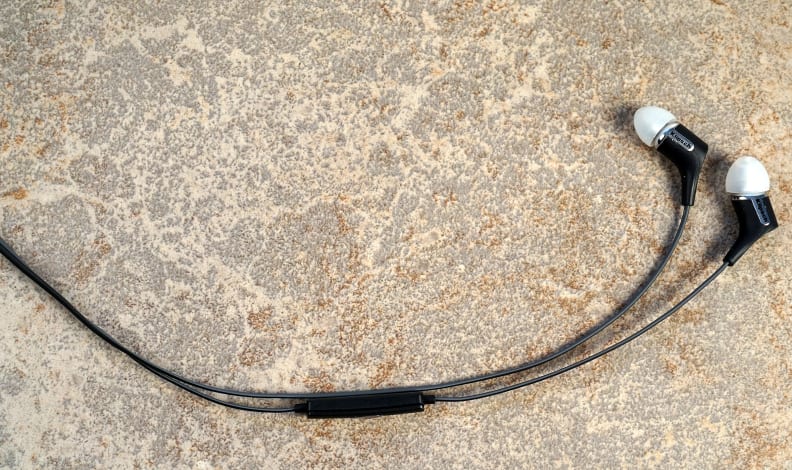
The Klipsch R6i in-ears feature a clean, frills-free design that's nevertheless durable. The tangle-free cable houses a three-button in-line mic/remote combo.
The cable features a three-button in-line remote/mic combo that's specifically designed to work with Apple devices—hence the "i" in R6i. The controller allows you to adjust volume, skip/reverse through songs in a playlist, or play/pause your music without rummaging in a bag or pocket. You can also easily start/end phone calls. Note that these controls won't work with Windows phones, and offer spotty reliability with Android devices.
Alongside the headphones themselves you get a small, zip-up carrying pouch, optional shirt clip accessory, and three extra pairs of silicone sleeves in various sizes. Other than the exclusive Apple device functionality, the R6i in-ears are well-designed and easy to use headphones that almost any consumer—from casual listener to audiophile—can get behind.
{{ photo_gallery "design gallery" }}
Audio Quality
Surprisingly good performance for the price.
At $99, the Reference R6i in-ears beg a single important question: Are you mostly paying for sound quality, or high-end materials? While we enjoy the simple, straightforward design of Klipsch's Reference in-ears, a flashy outfit is not in the cards. Fortunately, testing revealed that the R6i are actually terrific performers for the money, competing alongside some of the better in-ear headphones we've tested recently.
First and foremost, the Klipsch R6i boast a solid, consumer-friendly sound. They lack that totally flat, even musical emphasis sought by some audiophiles and professionals like studio engineers, but most listeners will be glad with the way things shape up. Sub-bass and bass elements get plenty of spotlight, naturally complementing the way the human ear hears frequencies to equalize with mid-tone and treble elements.
In fact, if you're familiar with the idea of an equal-loudness contour, you'll have a good idea of how the R6i in-ears sound. Everything from jazz, to blues, to Scandinavian doom folk will sound great. There's a touch of under-emphasis in the upper midrange, but it's so mild most listeners won't notice.
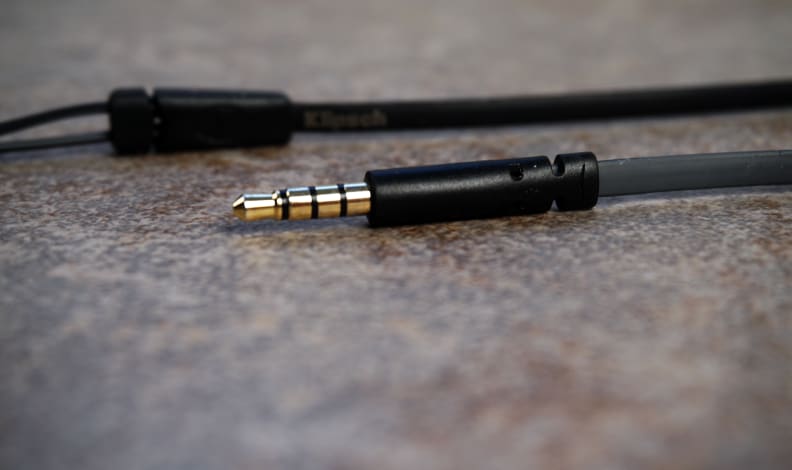
Despite their simple design and relatively affordable price, the R6i in-ears provide an excellent consumer sound with no perceptible distortion.
Secondly, testing revealed a complete absence of perceptible distortion. In the case of speakers, a natural amount of distortion is always present, usually in the sub-bass and bass range. In-ear headphones tend to struggle with this phenomenon because of their size, but the R6i are a definite exception. Music is clean and distortion-free, with no clipped bass or treble harmonics to speak of.
If you're worried about privacy—or good old peace and quiet—the R6i in-ears continue to deliver. Because they fill and block your ear canals, it'll be almost impossible for co-workers, fellow commuters, or your wide-eyed, curious cat to hear your music during playback. Likewise, the same great sealing that keeps music in keeps a lot of ambient noise out. If you want to tune out bassy elements like rumbling engines and truck horns, you should invest in some quality active cancelers, but expect midtone and treble noises to be properly quashed.
The only place the R6i didn't make mince meat of our lab tests was in channel tracking—music and sounds tend to play back louder in one ear than another for certain frequencies. This is by no means a dealbreaker, but if you're an especially attentive listener, it may bother you after a while. For all of our data and test results, head over to the Science Page.
The Verdict
This porridge is just right—and darn good.
In-ear headphones can be a tricky product to shop for. There's an endless slew of cheap 'buds you can buy in the checkout line at CVS that'll last two weeks, and sound so bad they'll make you wish they lasted two days. On the other hand, many companies make big claims about their hundred-dollar-plus "premium" ear buds, when what you're really paying for is fancy materials and design flourishes.
With that in mind, the Klipsch Reference R6i in-ears are a great middle-of-the-road solution for the practical shopper who cares about quality: They're sturdy enough to last and aren't so fancy you'll need to baby them, but they sound as good as plenty of flashier, fancier options.
Audiophiles may not find this bass-forward sound profile totally suitable, but most people will enjoy the extra bass presence and mildly boosted overtones. And everyone can agree that the total lack of distortion is an awesome result.
The R6i are a great choice if you need a simple path to an enjoyable listening experience, but as in-ears go, they're bereft of any kind of specialization. There are plenty of other great choices, like the $50 AKG K 323XS in-ears, which sound great but aren't quite as durable. And if you're willing to do a little more deal-hunting, you can get slightly better performance from the JBL Synchros S200i ($99 online). The Klipsch Reference R6i (MSRP $99.99) are great performers for the price. A sound profile (frequency response) that follows an equal-loudness contour is almost always a hit in consumer listening circles, and nobody can argue with zero perceptible distortion. Because of their in-ear design, the R6i also make great isolators and attenuators, and leak almost zero sound. The only place they could be improved is in channel tracking—occasionally, music plays through one channel a little louder than the other.
Frequency Response
The Reference R6i follow a frequency response curve that's very similar—almost identical—to an equal-loudness contour, or ELC. An ELC emphasizes musical frequencies in such a way that they sound roughly equal to the human ear. For example, since humans don't hear sub-bass and bass frequencies as loudly as midtone and some treble frequencies, an ELC tends to greatly emphasize sub-bass/bass tones in order to correct for the human ear's natural weakness. While the R6i don't deliver a completely perfect ELC, they're extremely close.
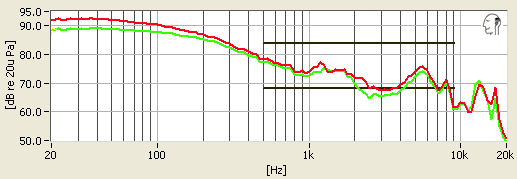
Total Harmonic Distortion
Our Total Harmonic Distortion (THD) or distortion test measures unwanted noise and clipped notes during speaker playback. Many headphones suffer from some element of distortion in the sub-bass range, but ideally keep distortion below 3% THD from about 60 Hz through the highest frequencies. The R6i performed marvelously here, testing with less than 2% THD from the deepest sub-bass range to the tinniest trebles.

Isolation/Attenuation
Our isolation test measures how well a set of headphones passively (or actively, in the case of noise cancelers) blocks outside ambient noise. Most in-ear type headphones perform well here, as they tend to block most or all of the ear canal, naturally reducing ambient noise as it simply never reaches the eardrum.
In this regard, the Reference R6i performed as we expected them to. They don't block much by way of sub-bass, bass, or midtone frequencies, so deeper, rumbling noises like truck horns and airplane engines will still be audible even with your ears plugged up. The R6i do reduce upper midrange and treble noises by as much as 30 dB, cutting them down to about 25% of their original volume, and the very highest noises by about 50 dB, meaning ringing phones and screeching kids will be all but inaudible.
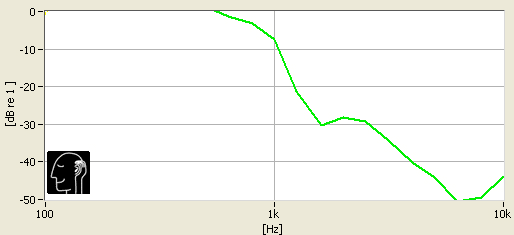
Channel Tracking
Ideally, a pair of headphones will play music through the left and right channels (speakers) at identical volumes. Often times, however, small discrepancies exist between channel volume, resulting in what are called tracking errors, where frequencies play louder in one channel than the other. To measure this, we feed a frequency sweep through a set of headphones, measuring the relative volume in each channel.
This is one area where the R6i in-ears were a bit wonky, as testing revealed a few odd behaviors in terms of tracking: the left channel is slightly louder than the right for most of the sub-bass and bass range. This is very hard to hear, as it's less than a 5 dB difference. Above 1kHz, however, volume difference swings by almost 5 dB from the left to the right channel, and doesn't even out again until around 3kHz.
While most of these discrepancies are minor, they might occasionally annoy listeners with very sensitive ears.

Impulse Response
Our impulse response test measures frequency sweeps similarly to the frequency response test, only instead of measuring relative emphasis of frequencies, it measures duration. Most headphones perform nominally here—it is rare that any frequencies will ring longer than about 15ms before decaying, as much longer than that can become audible, which is problematic. The R6i met expectations: While deep bass frequencies do ring for a bit longer than midtone or treble frequencies, nothing exceeds the 15ms threshold.
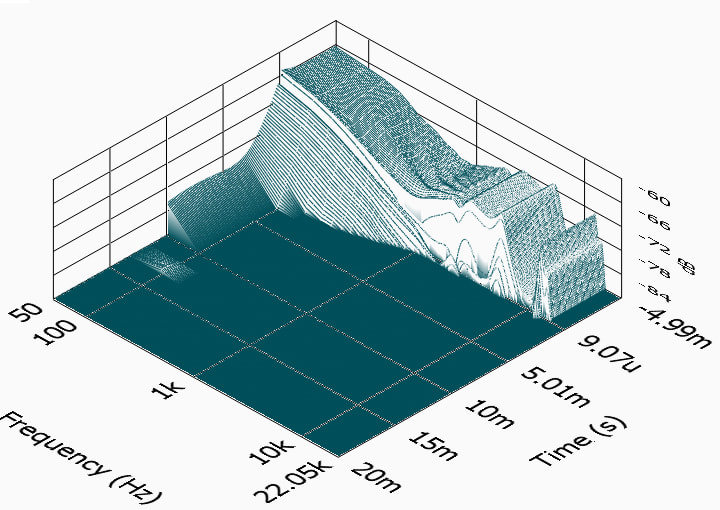
Meet the tester
Lee was Reviewed's point person for most television and home theater products from 2012 until early 2022. Lee received Level II certification in TV calibration from the Imaging Science Foundation in 2013. As Editor of the Home Theater vertical, Lee oversaw reviews of TVs, monitors, soundbars, and Bluetooth speakers. He also reviewed headphones, and has a background in music performance.
Checking our work.
Our team is here for one purpose: to help you buy the best stuff and love what you own. Our writers, editors, and lab technicians obsess over the products we cover to make sure you're confident and satisfied. Have a different opinion about something we recommend? Email us and we'll compare notes.
Shoot us an email

